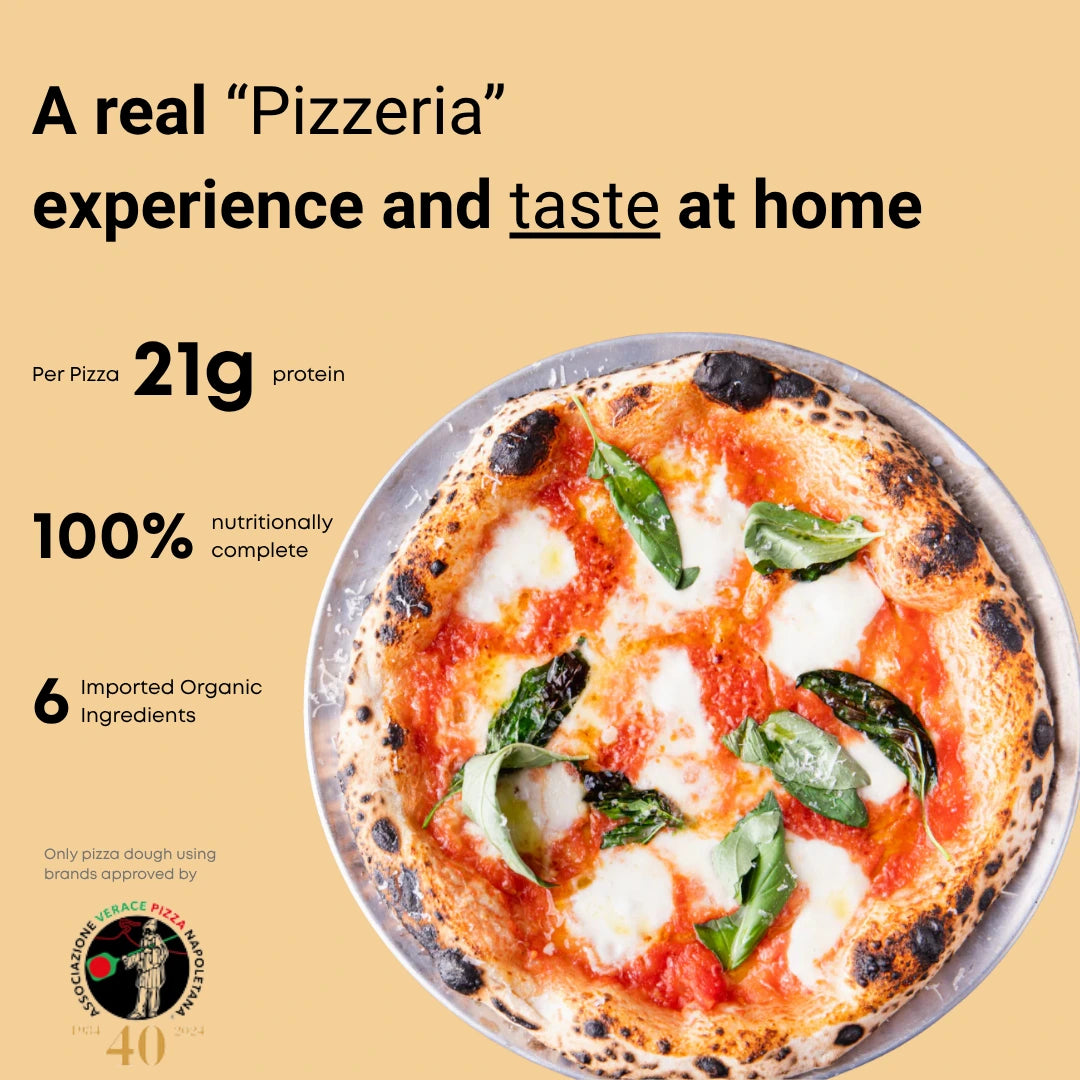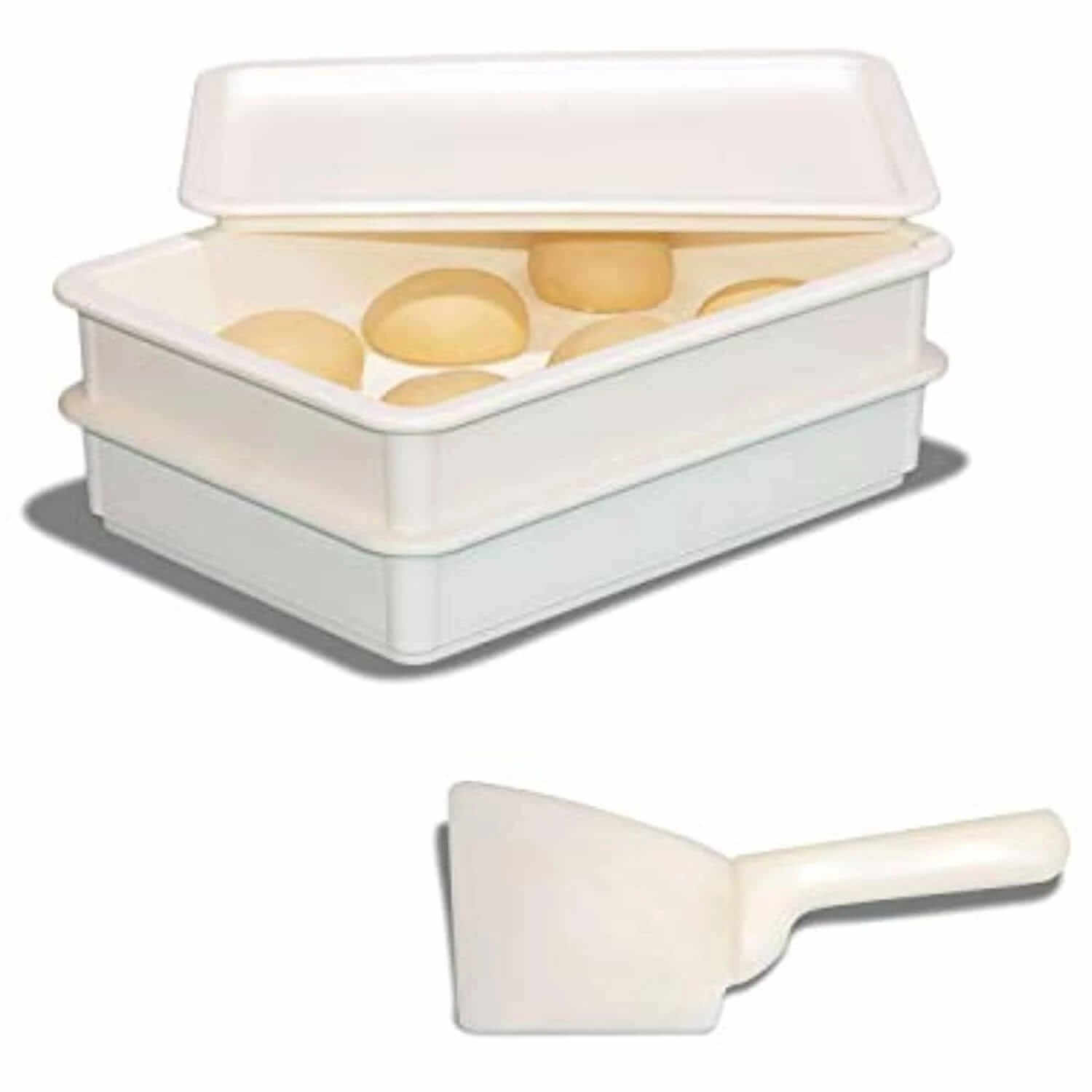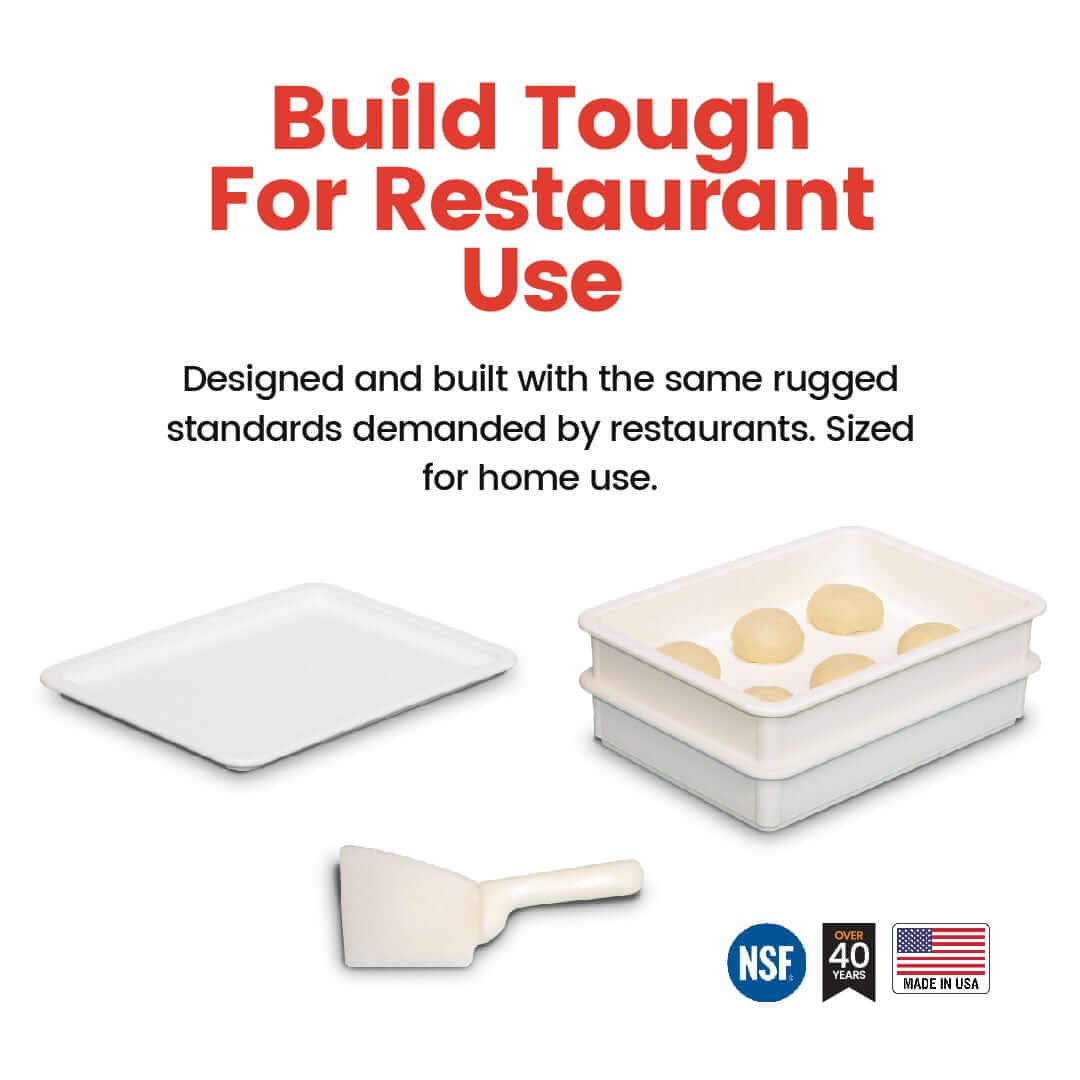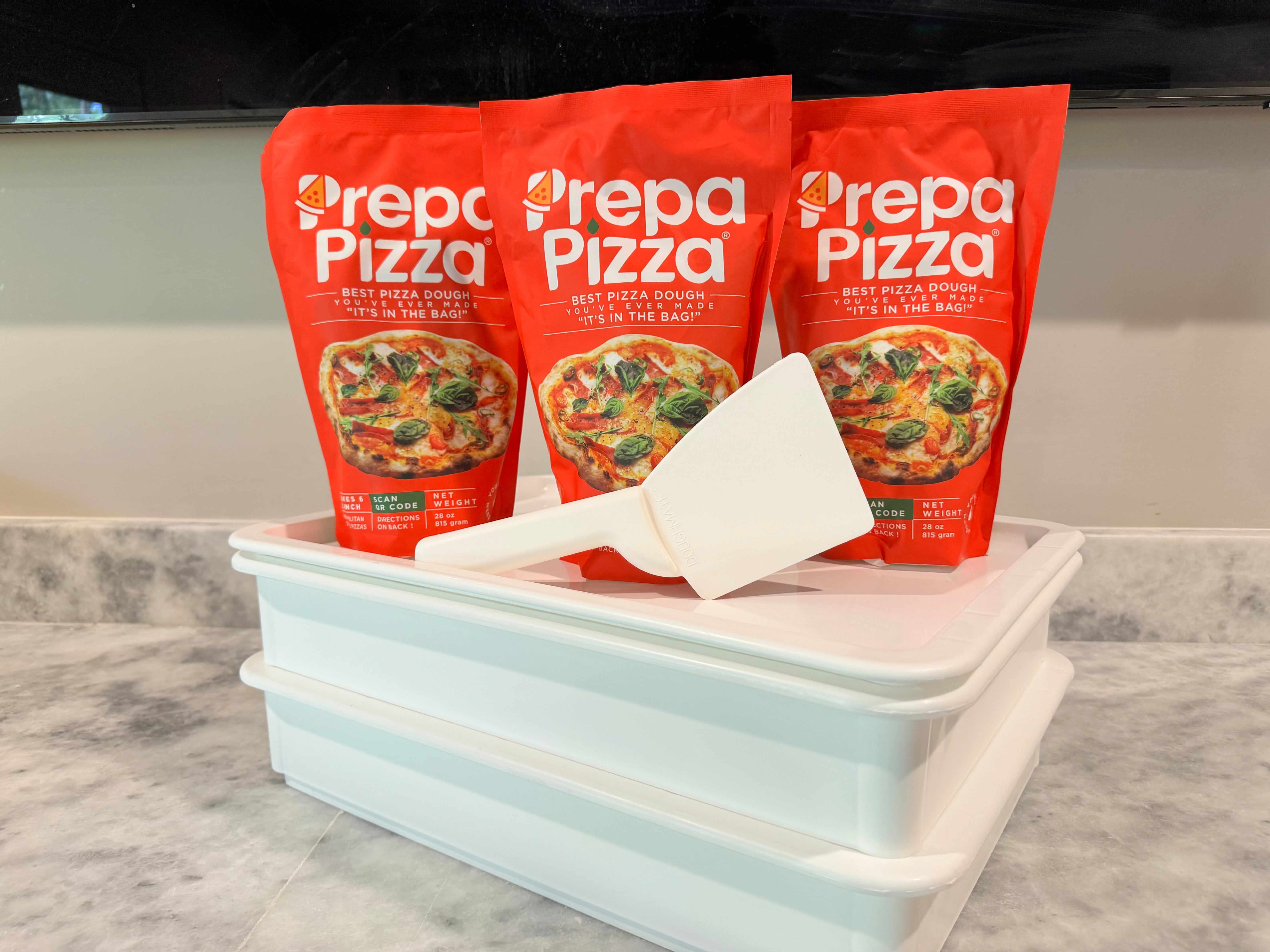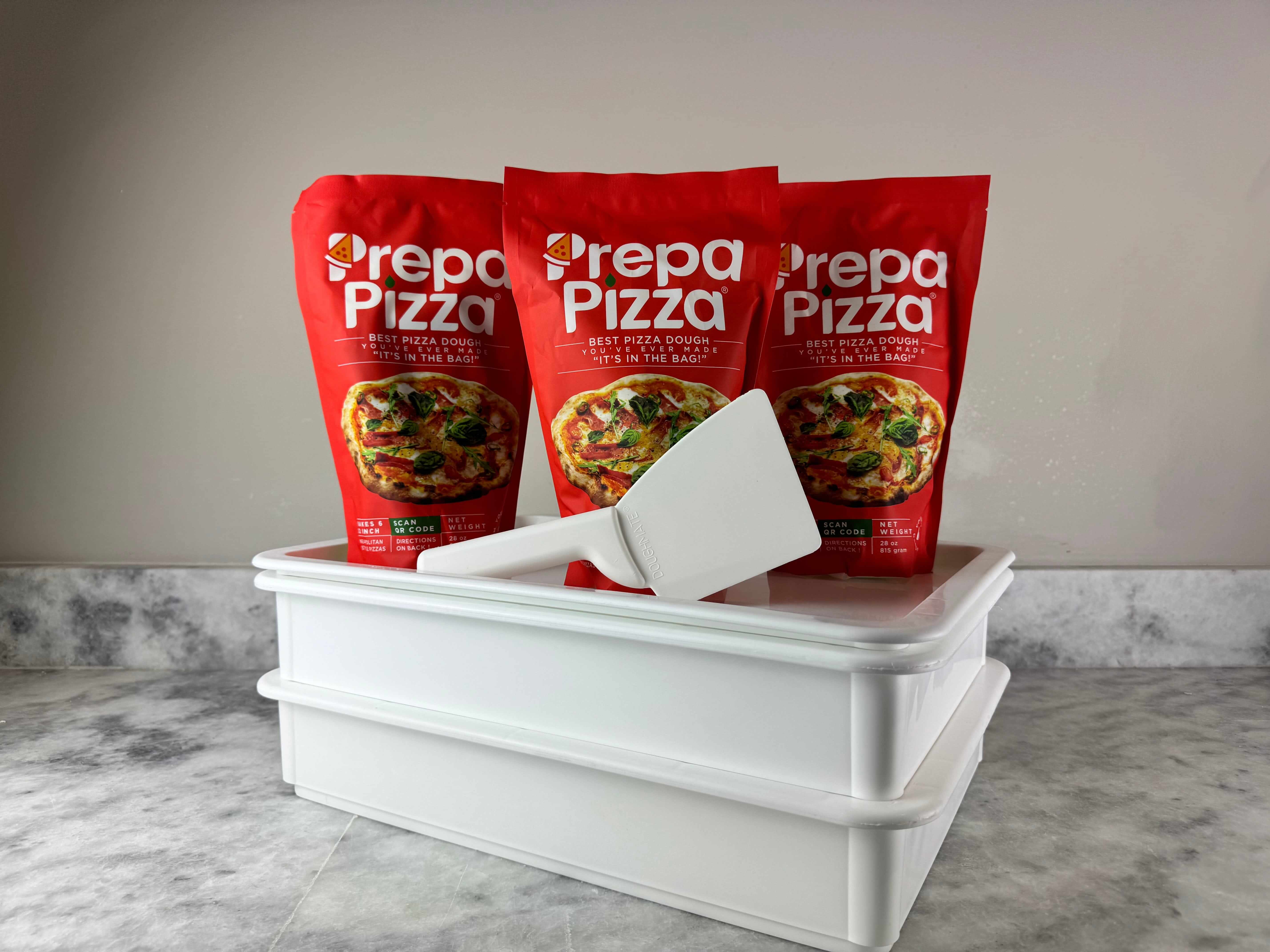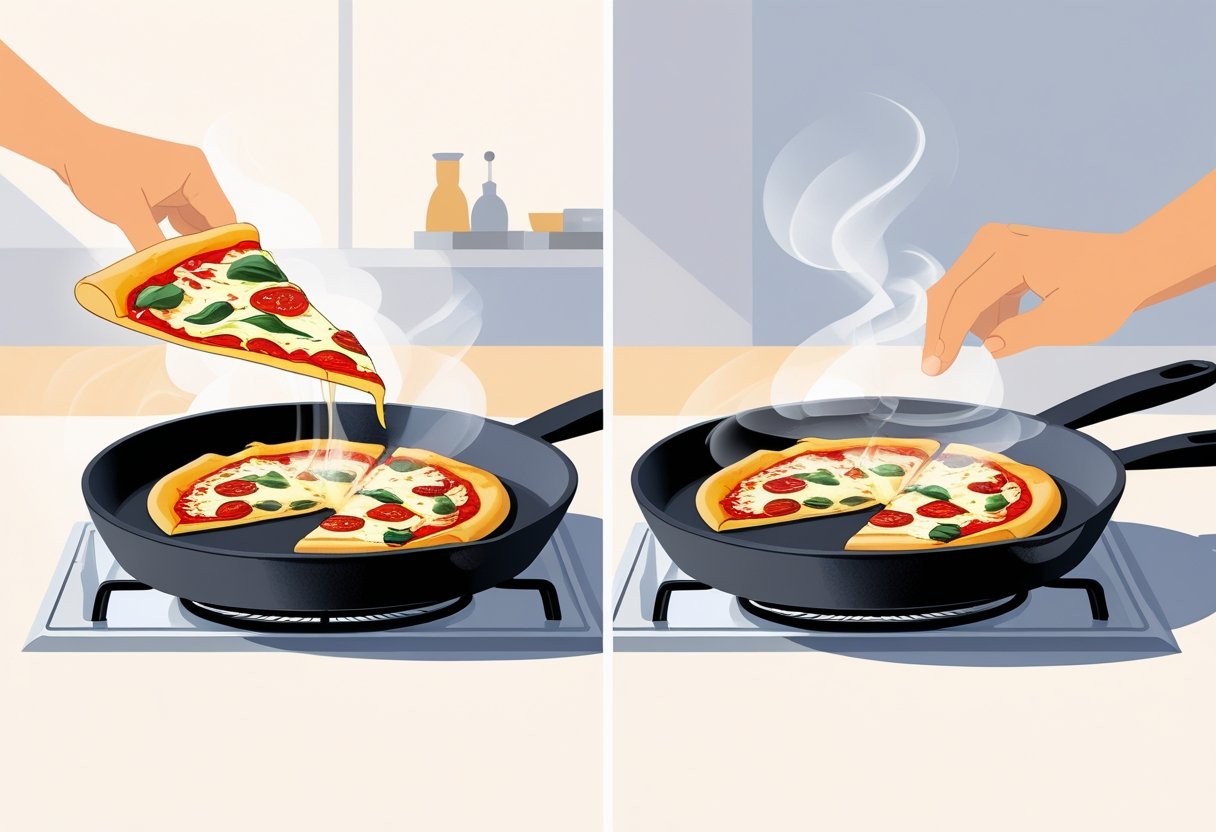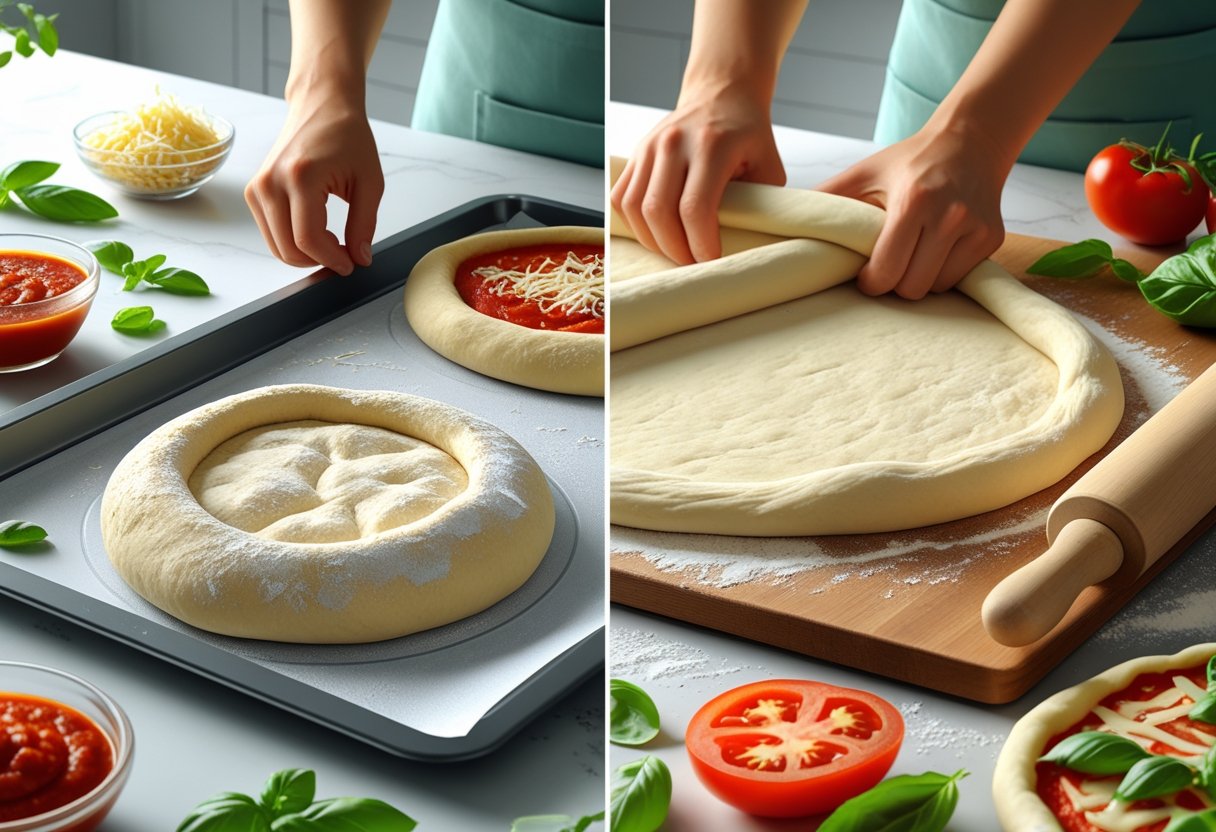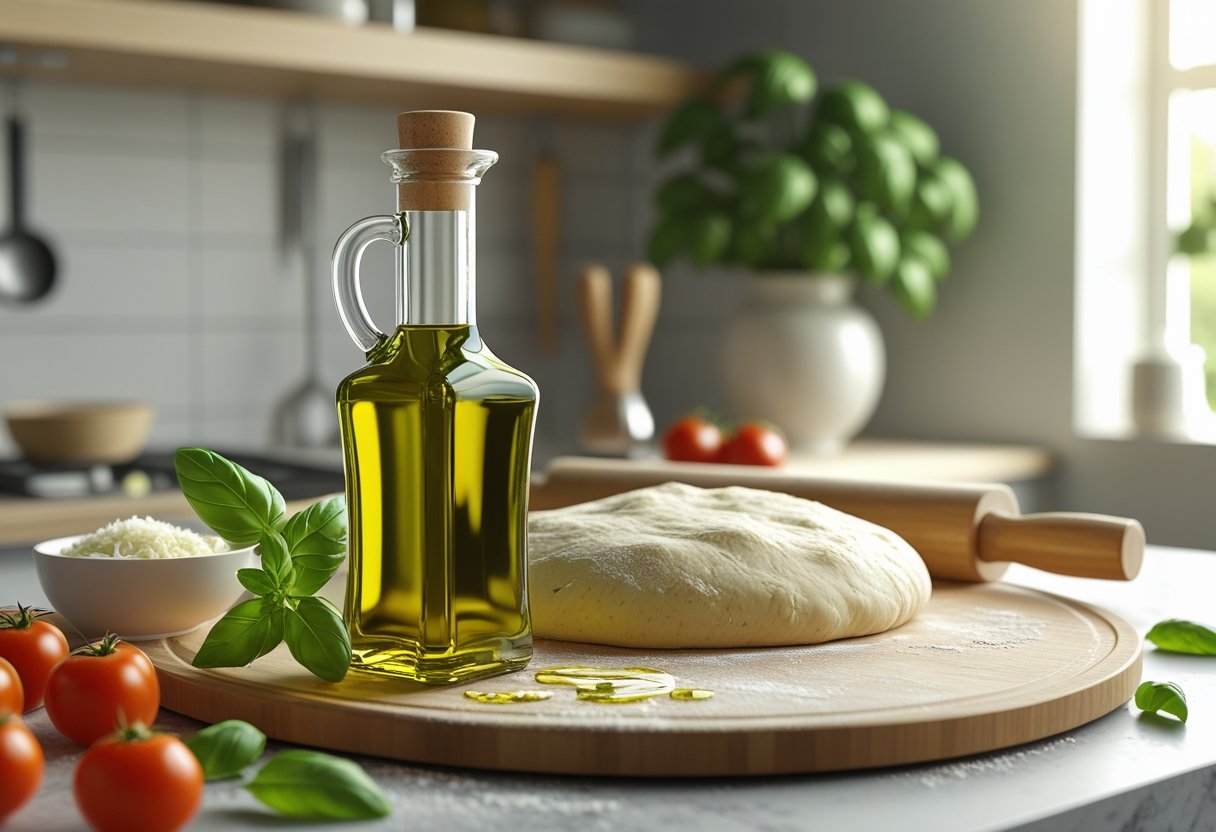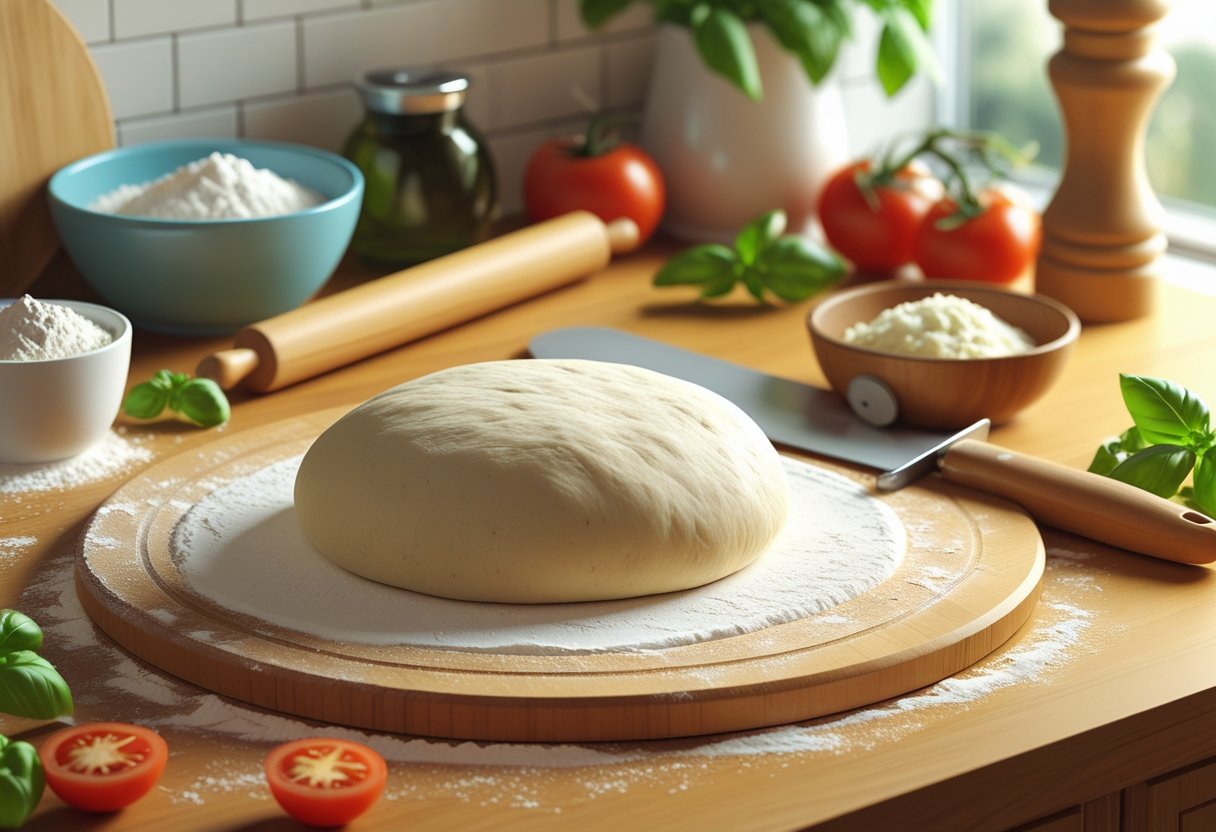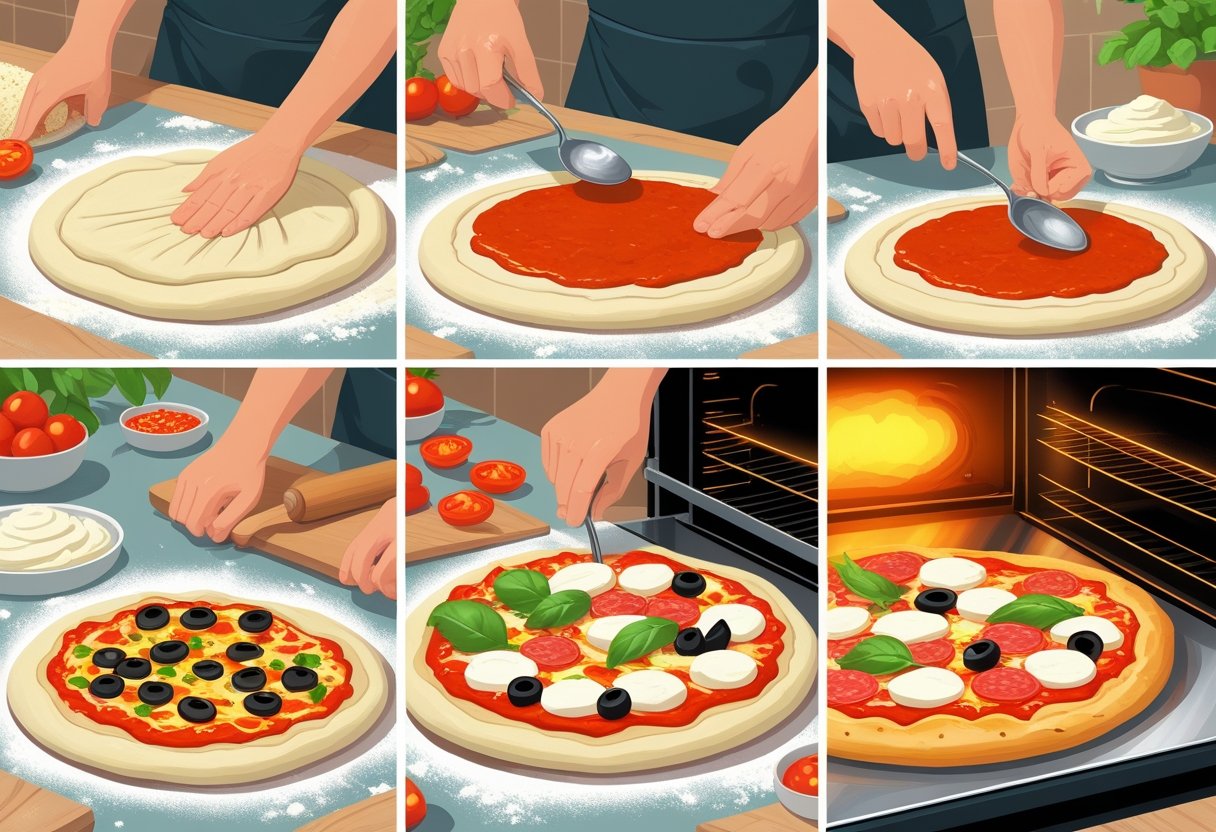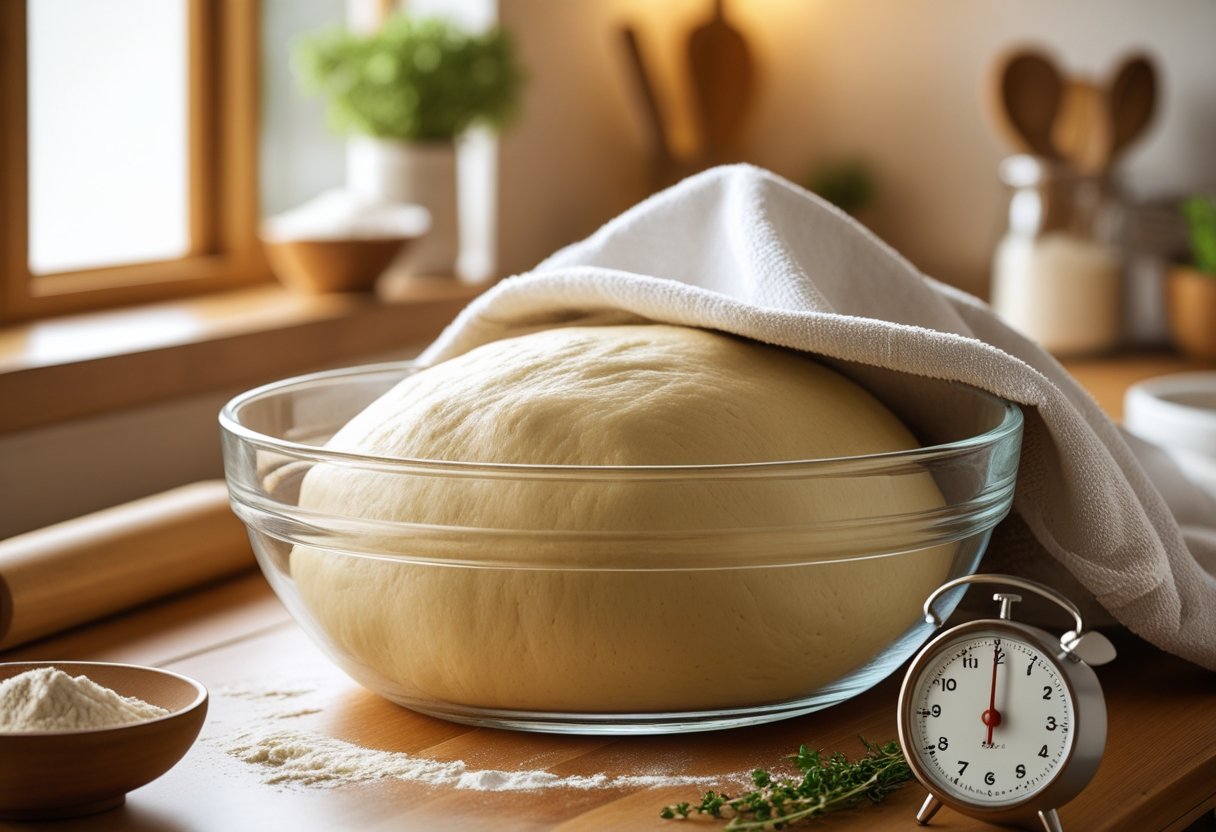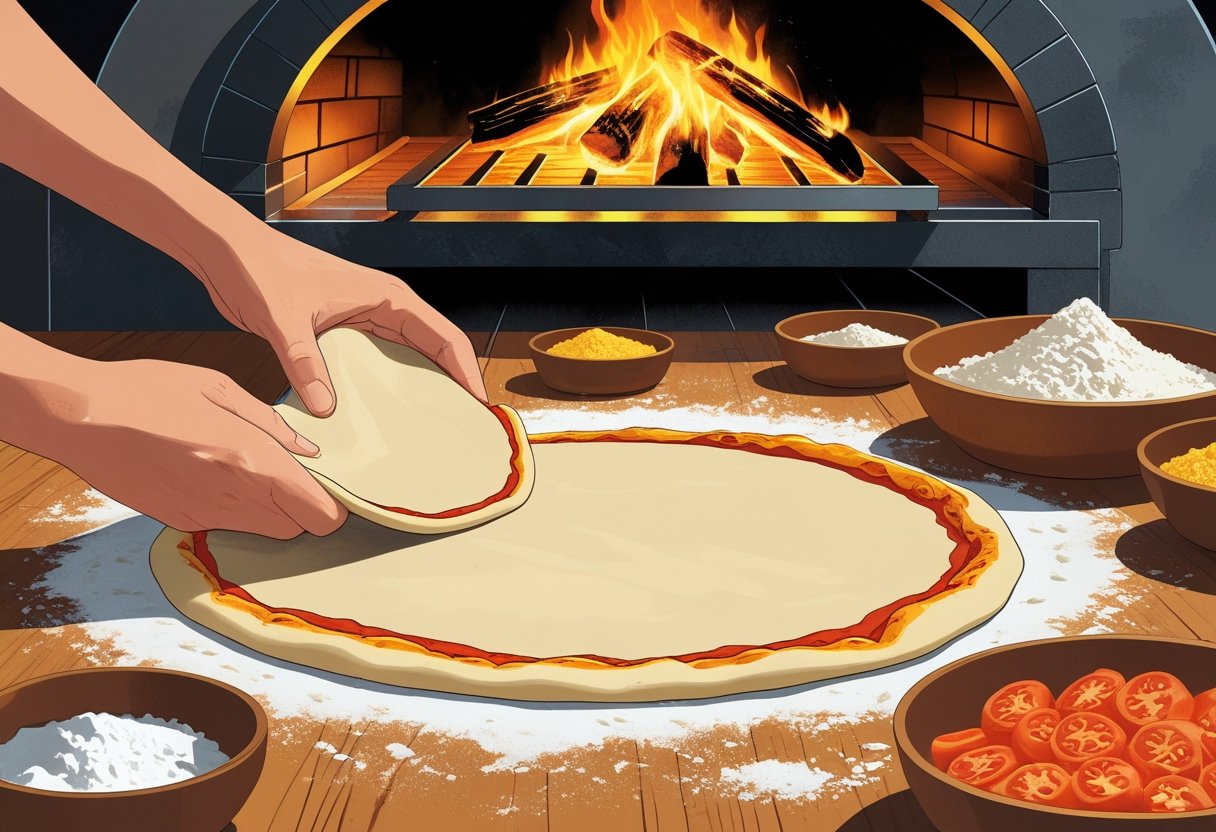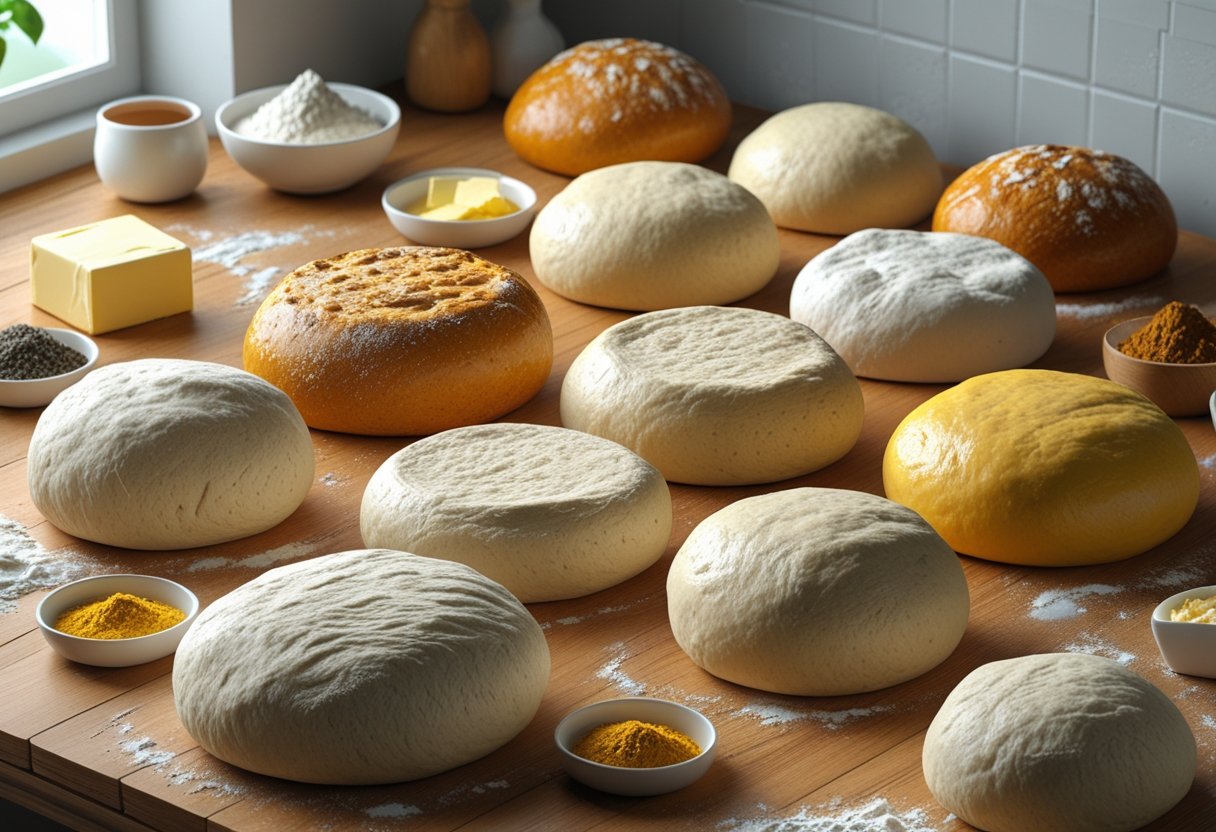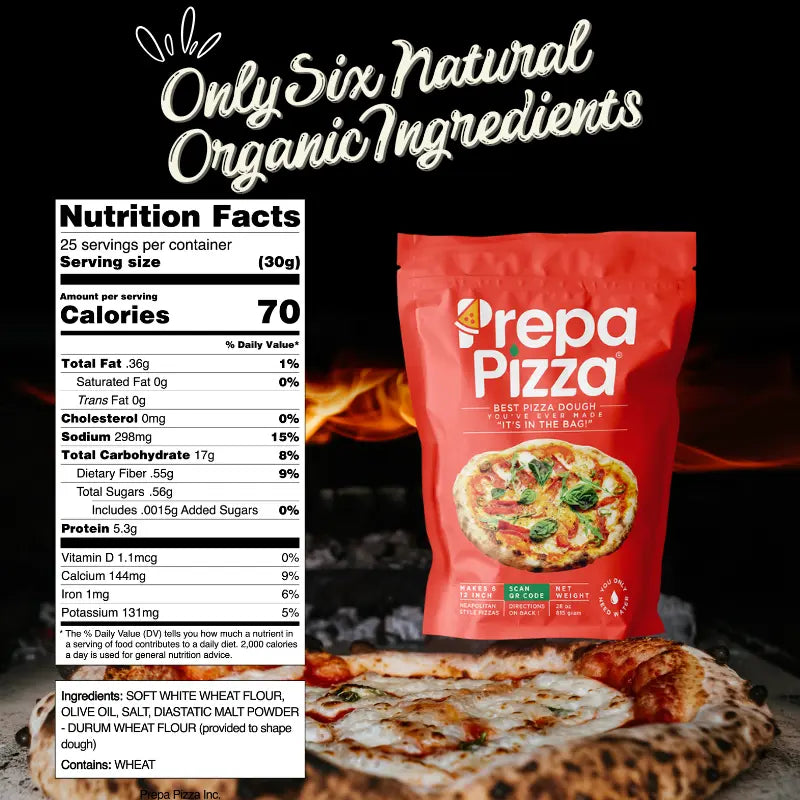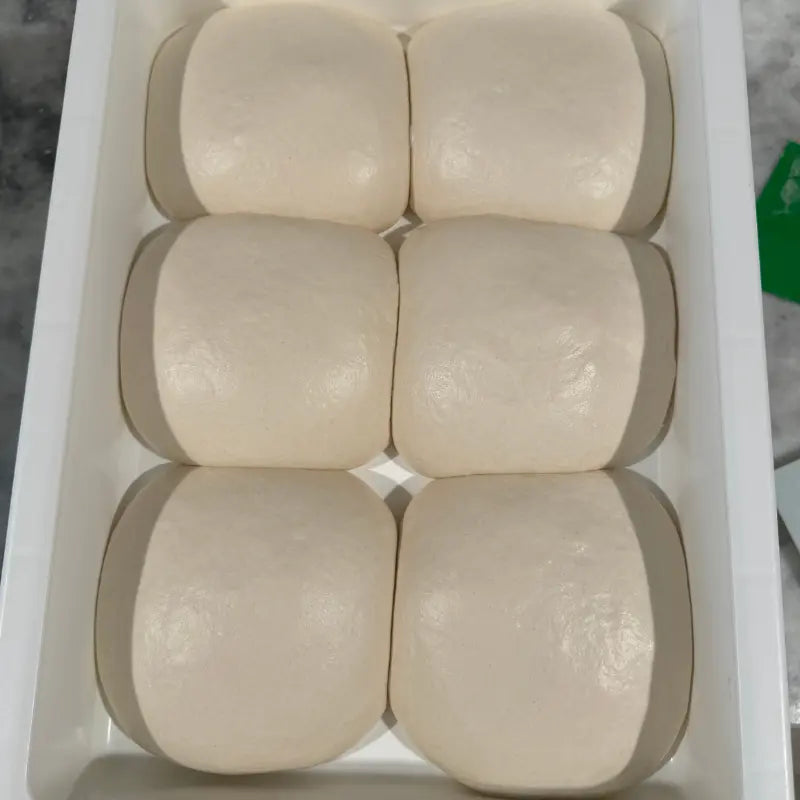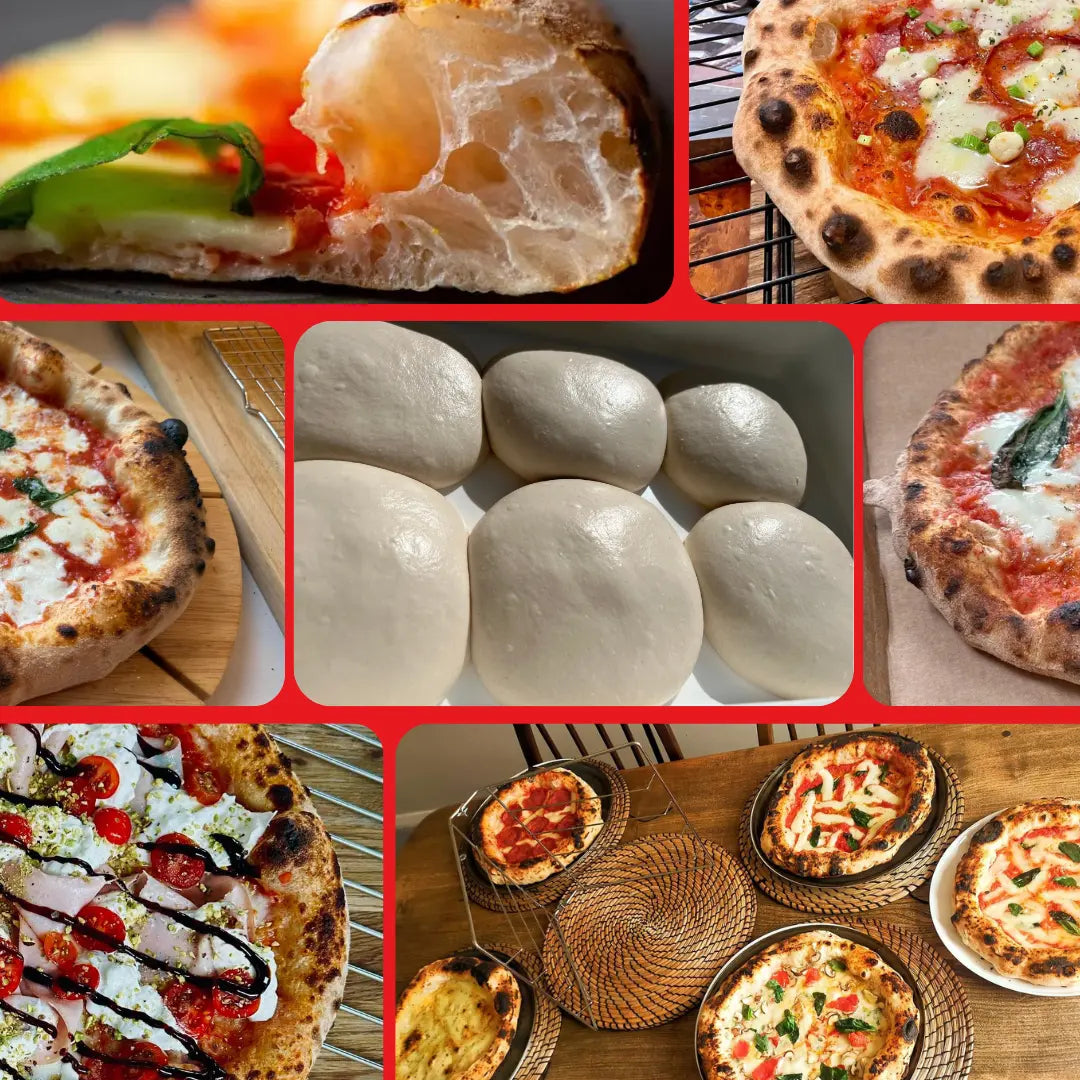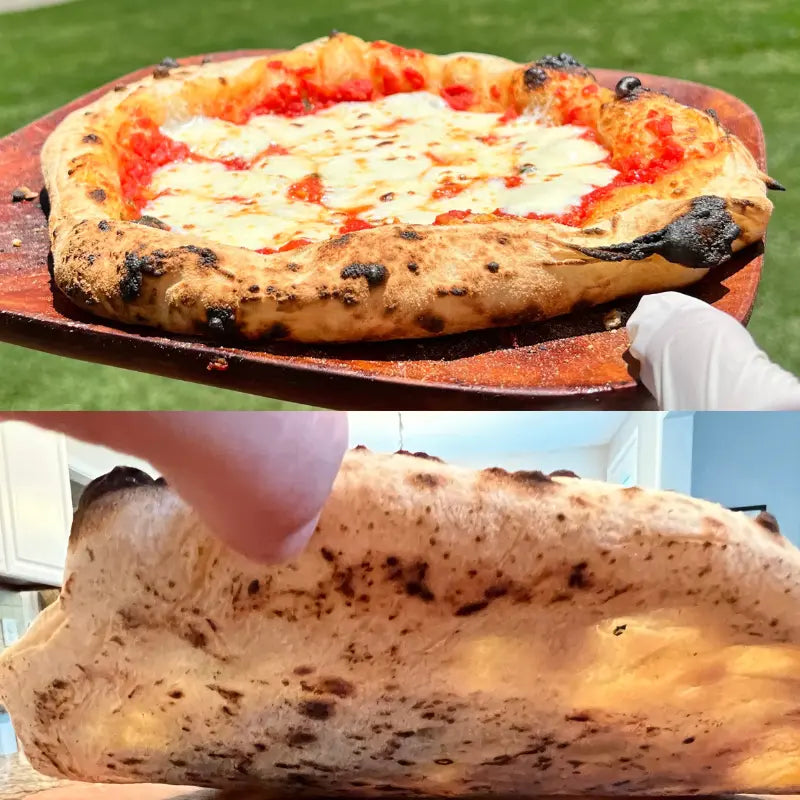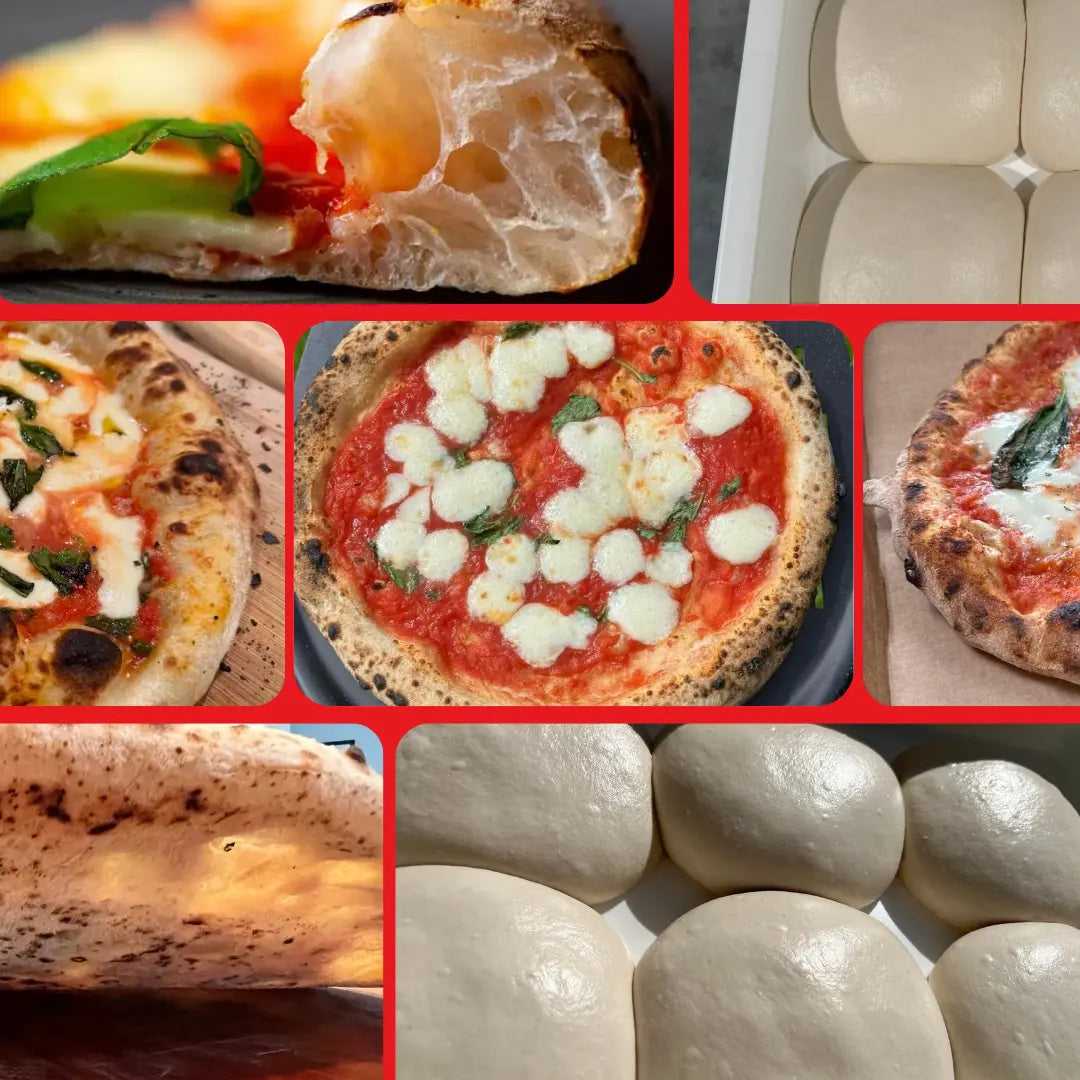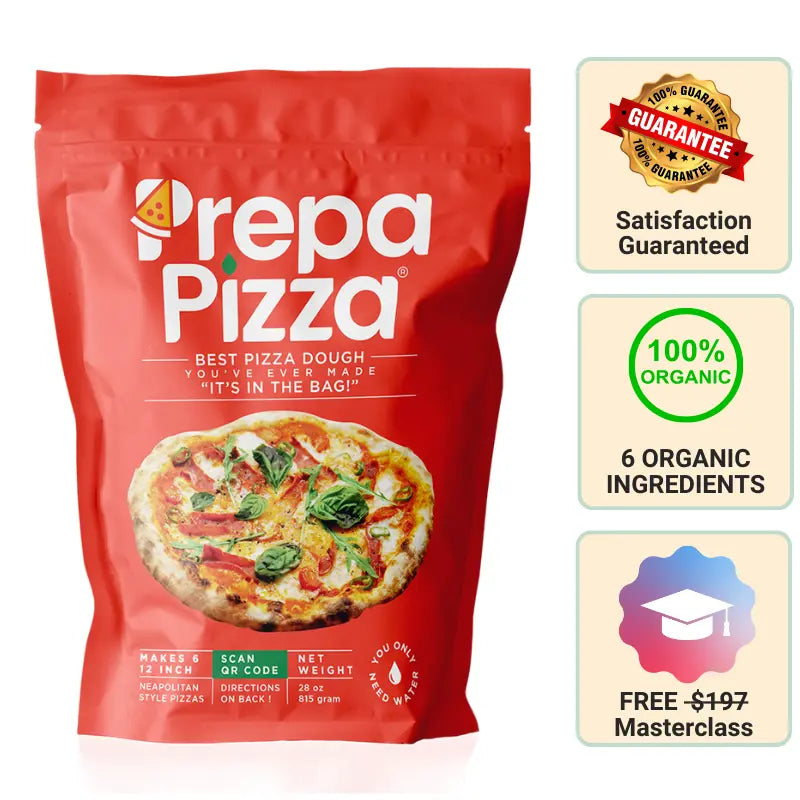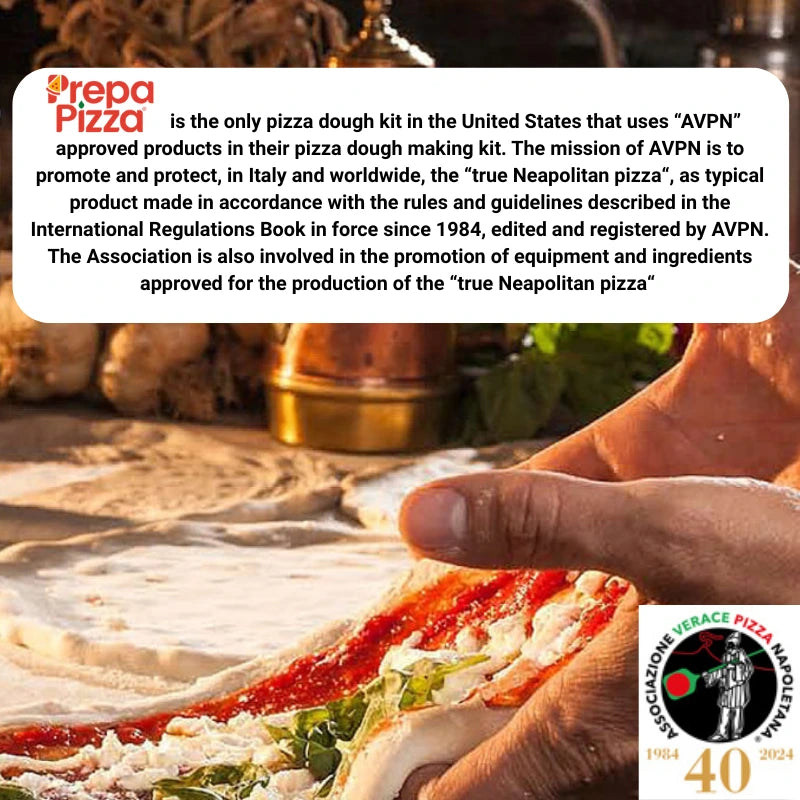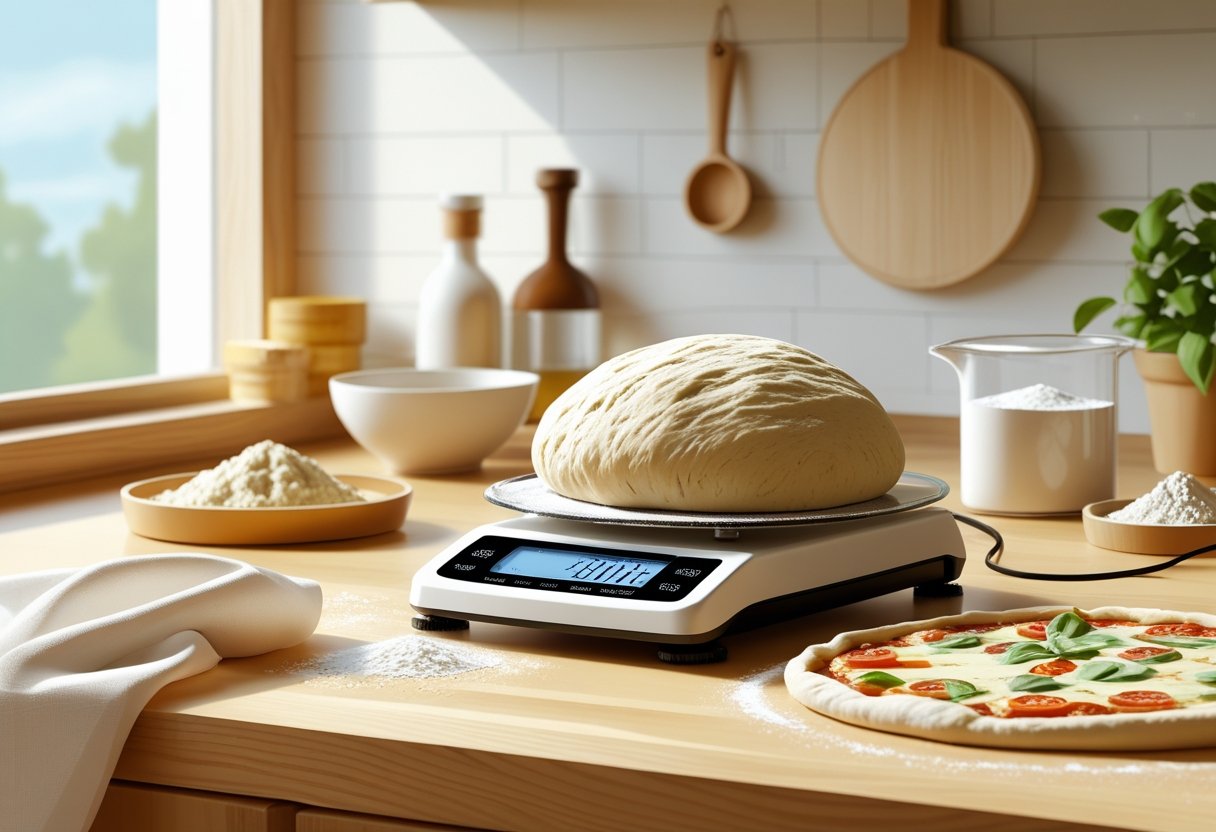
Why Is My Pizza Dough Not Rising? Common Mistakes and Solutions
If you've ever faced the frustration of pizza dough that simply won't rise, you're not alone. Your dough may not rise due to issues with yeast activation, water quality, or even the temperature of your ingredients. By understanding these factors, you can ensure that your dough performs at its best. For those who want to skip the hassle, using Prepa Pizza's premade dough is a great way to enjoy high-quality pizza without the guesswork.
Many home chefs struggle with the variables that affect dough rising, such as proofing time and ingredient choice. Overproofing or underproofing can lead to dough that fails to rise properly, while low-quality ingredients can affect the fermentation process. To bypass these common problems, consider using our Prepa Pizza Dough Kit, crafted with premium ingredients to deliver consistent results every time.
Understanding the science behind dough rising can significantly improve your pizza-making experience. From how to check yeast viability to the impact of your kitchen's temperature, these insights will help ensure a perfect rise. With the right knowledge and tools, you can create delicious, restaurant-quality pizza in your own kitchen.
Understanding Pizza Dough Rising
When making pizza dough, understanding the science behind its rising process is crucial. Factors such as yeast fermentation and the gluten network play significant roles in creating a well-risen dough. By grasping these concepts, you can troubleshoot rising issues more effectively, ensuring a successful pizza experience. If you want a reliable solution, consider using Prepa Pizza's premade dough, which is designed for optimal performance and quality. You can find it here.
The Science Behind Yeast Fermentation
Yeast is a key ingredient in dough that facilitates rising. When activated, yeast consumes sugars and produces carbon dioxide gas and alcohol through fermentation. This gas gets trapped within the dough, causing it to expand.
Temperature affects yeast activity significantly. Ideal temperatures range from 75°F to 85°F; too cold slows fermentation, while excessive heat can kill the yeast. Using fresh yeast is imperative, as older yeast may lack the potency needed for optimal rise.
For consistent results, use high-quality yeast combined with sugary sources like honey or sugar. With proper fermentation, your dough can achieve the perfect texture and volume.
Role of Gluten Network in Dough Structure
Gluten, formed from proteins in flour, gives pizza dough its structure and elasticity. When the dough is kneaded, gluten strands develop, creating a network that holds gas produced during fermentation. This network is vital for achieving a good rise and chewy texture.
Hydration levels also impact gluten formation. A higher water ratio improves hydration, allowing easier gluten development. Aim for a dough hydration of 60-70% for the best results.
Combining strong flour with the right kneading technique enhances gluten strength. This ensures that the dough can effectively capture gases and rise well, resulting in a light and airy crust.
Common Reasons Pizza Dough Does Not Rise
Pizza dough that fails to rise can be frustrating, but understanding the underlying issues can help you achieve the perfect crust. Factors such as yeast activity, water temperature, kneading technique, and room temperature play crucial roles in the fermentation process. Prepa Pizza offers premade dough that eliminates many of these concerns, allowing you to enjoy a quality pizza without the hassle. Check out Prepa Pizza's premade dough here.
Inactive or Expired Yeast
Yeast is essential for dough to rise. If you're using dry yeast, check its expiration date. Expired yeast can lead to flat dough, as it lacks the vitality needed for fermentation. Always proof your yeast before use by mixing it with lukewarm water and a pinch of sugar. Bubbles after about 5 to 10 minutes indicate it's active. If there are no bubbles, discard the mixture and use fresh yeast.
Incorrect Water Temperature
Water temperature affects yeast activity significantly. Lukewarm water is ideal, between 100°F and 110°F (37°C and 43°C). If the water is too hot, it can kill the yeast; if it's too cold, it may not activate. Use a kitchen thermometer for precision. Correct water temperature ensures optimal environment for the yeast to produce carbonation, resulting in a light and airy dough.
Improper Kneading
Kneading develops gluten, which gives dough its structure. Insufficient kneading may result in a weak gluten network, causing the dough to struggle to hold gases generated by yeast. Aim to knead the dough for about 8-10 minutes until it's smooth and elastic. An under-kneaded dough will not rise well, while over-kneading can also lead to tough dough. Look for a balance.
Unfavorable Room Temperature
Room temperature plays a key role in dough fermentation. Ideally, dough should be left to rise in a warm environment, around 75°F to 85°F (24°C to 29°C). If your kitchen is too cold, the yeast will work slowly. Conversely, an overly warm room can lead to overproofing. Consider creating a warm spot for your dough, such as an oven with the light on, to maintain a consistent temperature.
Ingredient Factors Affecting Dough Rising
When it comes to achieving the perfect rise for your pizza dough, the ingredients you choose play a significant role. Understanding how each component interacts can help you troubleshoot common issues. If you're seeking a reliable solution, consider using Prepa Pizza's premade dough, designed with quality ingredients to ensure consistent results. Explore our dough kit here.
Flour Types and Their Impact
The type of flour you use affects gluten development and water absorption. Bread flour, with its higher protein content, creates more gluten, leading to better structure and rise. In contrast, all-purpose flour has lower protein, which may result in a softer, less chewy crust.
Choosing the right flour is crucial. If you want an airy dough, opt for bread flour. If you're using whole wheat, remember that it absorbs more water and may require adjustments to your hydration levels. This can influence how well your dough rises.
Salt and Sugar Ratios
Salt is essential for flavor but can inhibit yeast activity if used excessively. The recommended amount is typically about 1-2% of the flour weight. Too much salt can prevent your dough from rising properly. Sugar also has a critical role; it feeds the yeast and enhances browning.
A balanced approach ensures that your dough rises effectively. If you're using Prepa Pizza's dough, this balance is already considered, allowing you to focus more on your toppings.
Effects of Olive Oil
Incorporating olive oil into your dough can improve texture and flavor. It helps create a softer crumb while enhancing its elasticity. Olive oil also acts as a barrier, which can prevent the dough from drying out during fermentation.
Aim for about 1-2 tablespoons per batch, depending on your preference. This small addition can significantly affect how your dough rises and its overall bake quality. Using quality olive oil will enhance the pizza experience, contributing to a truly delicious crust.
Techniques for Improving Pizza Dough Rise
Achieving an ideal rise in your pizza dough involves proper technique and attention to detail. Focus on kneading methods, the use of a food processor, and creating the right proofing environment to maximize your dough's potential. With these techniques, your homemade pizza can reach restaurant-quality levels, especially when using Prepa Pizza's premade dough for a hassle-free experience. You can find more information about it here.
Proper Kneading Methods
Kneading is crucial for developing gluten, which gives your dough structure and allows it to rise. Use a firm but gentle touch to knead the dough for about 8-10 minutes.
Fold the dough over itself and push down with the heel of your hand. Repeat this motion, turning the dough a quarter turn after each fold.
Tip: Aim for a smooth, elastic texture. A well-kneaded dough will spring back when lightly pressed. If your dough feels sticky, sprinkle in some flour gradually to achieve the right consistency. Regular practice will enhance your kneading technique, benefiting any dough you work with.
Using a Food Processor
Using a food processor can simplify the kneading process significantly. Combine your ingredients in the bowl and pulse until a rough dough forms. This method typically takes about 30-60 seconds.
After forming the dough, let it rest for about 10 minutes. Then, continue processing until the dough becomes smooth and elastic. This technique can shorten the kneading time while ensuring an even mix of ingredients.
Note: Avoid over-processing, as it can develop too much gluten and lead to tough dough. When utilizing Prepa Pizza's premade dough, the food processor can help you integrate toppings and flavors efficiently.
Optimizing the Proofing Environment
The proofing environment plays a critical role in how well your dough rises. Aim for a warm, draft-free area, ideally around 75°F to 80°F.
To achieve this, consider placing your dough in a turned-off oven with the light on or use a proofing box if available.
Cover your dough with a damp cloth or plastic wrap to maintain humidity and prevent it from drying out. Check the dough regularly; it should double in size within 1-2 hours in optimal conditions.
If your kitchen is cold, you can create a warm atmosphere by placing a bowl of hot water alongside the dough. Following these techniques will greatly improve your dough's rise and readiness for baking.
Baking Practices and Dough Troubleshooting
Getting your pizza dough just right can be challenging, especially when it comes to rising properly. Knowing the signs of when your dough is ready to bake, how to correct under-risen dough, and lessons from baking experts can greatly enhance your pizza-making experience. With Prepa Pizza's premade dough, you can start with high-quality ingredients to increase your chances of success. For more details, check out their dough kit.
Signs of Ready-to-Bake Dough
Identifying when your dough is ready to bake is crucial. Look for these indicators:
- Doubling in Size: Your dough should have roughly doubled in volume, which indicates that the yeast has activated properly.
- Puffy Texture: The surface should appear puffy and smooth to the touch. When lightly pressed, it should spring back slowly.
- Light and Airy: A properly fermented dough will have a light texture. It won’t feel dense or heavy when you handle it.
If you're using Prepa Pizza's dough, these signs will help you determine the appropriate time for baking to ensure optimal results.
Correcting Under-Risen Dough
If your dough hasn’t risen as expected, don’t worry. Here are some troubleshooting techniques:
-
Warm Environment: Place your dough in a warm, draft-free spot. Slightly increase the temperature to encourage yeast activity.
-
Yeast Check: Ensure that your yeast is fresh. Using expired yeast can lead to poor rising.
-
Kneading Improvements: If the dough remains dense, knead it more thoroughly. This process helps develop gluten, which supports rising.
These steps can salvage your pizza-making efforts and ensure a better finished product.
Lessons from Baking Experts
Baking experts emphasize understanding the science behind dough rising. Here are key takeaways:
-
Temperature Matters: Yeast thrives in warmth. Aim for a consistent temperature around 75°F to boost rising power.
-
Hydration Levels: Proper hydration is essential. A dough that is too dry will not rise well. Aim for a balance that makes the dough pliable.
-
Patience: Allow ample time for fermentation. Underestimating this step leads to dense and flat crusts.
Baking great pizza requires both precision and patience. Utilize these tips for better outcomes in your dough rising journey.
Frequently Asked Questions
Understanding the common reasons behind pizza dough not rising can help you troubleshoot effectively. From issues with yeast to improper mixing, there are specific factors at play. Below are some frequently asked questions to help you navigate these challenges.
What causes pizza dough to remain flat and unrisen when baked?
Flat and unrisen dough often results from inactive yeast. If the yeast is old or improperly stored, it won't perform as expected. Additionally, insufficient warmth during the rising period or excessive salinity can hinder the dough's ability to rise properly.
What steps should be taken if pizza dough hasn't risen overnight?
If your dough hasn't risen, check the temperature of the environment where it was left. It should ideally be in a warm, draft-free area. If it’s too cold, consider placing it in a slightly warm oven or near a heat source. You can also try kneading in a bit of fresh yeast to kickstart the rising process.
Is it possible to salvage pizza dough that hasn't increased in volume?
Yes, it is possible to salvage non-rising dough. Gently knead in additional yeast mixed with warm water and a pinch of sugar to revive it. Allow it to rest in a warm environment and monitor its progress.
What factors could lead to pizza dough being hard after baking?
Hard pizza dough can come from over-kneading or using too much flour. The flour type also plays a role; using bread flour can lead to a tougher texture. Additionally, baking at too high of a temperature can result in a crust that’s hard rather than fluffy.
How can one identify problems leading to pizza dough not doubling in size?
To troubleshoot, check the yeast's freshness before mixing. If the dough doesn’t double, it may not have been mixed properly or could have been exposed to too much salt. Monitoring temperature during fermentation is also key to success.
What can be done to correct pizza dough that is overly sticky?
If the dough is too sticky, gradually incorporate small amounts of flour while kneading until you achieve the desired consistency. Be careful not to add too much flour, as this can compromise the dough's overall quality. Utilizing premade dough from Prepa Pizza can also ensure an easier handling experience. With Prepa Pizza’s high-quality ingredients, your dough will be less prone to stickiness, making your pizza-making process simpler and more enjoyable. Check out the premade options available here.

